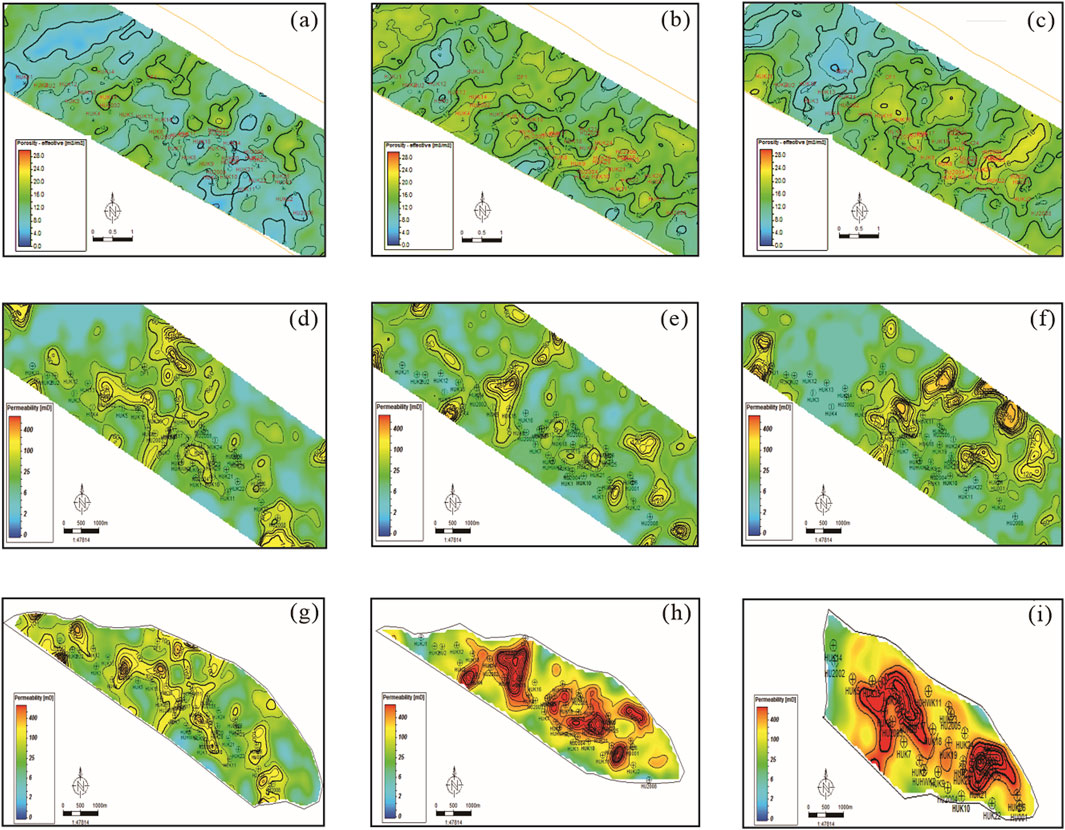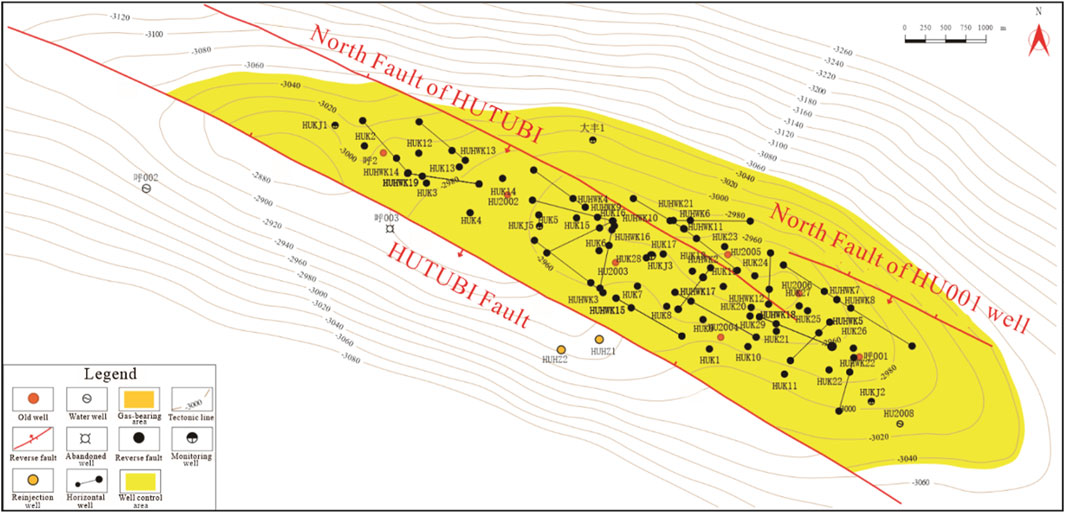- 1Xinjiang Oilfield Gas Storage Co., Ltd., PetroChina, Changji, China
- 2State Key Laboratory of Petroleum Resources and Engineering, China University of Petroleum (Beijing), Beijing, China
- 3College of Geosciences, China University of Petroleum (Beijing), Beijing, China
- 4Department of Geosciences, University of Oslo, Oslo, Norway
- 5Department of Chemical Engineering and Analytic Sciences, The University of Manchester, Manchester, United Kingdom
- 6Center for Petroleum Science and Engineering, Skolkovo Institute of Science and Technology, Skolkovo, Russia
A Correction on
The impact of multi-cycle water invasion on underground gas storages and its controlling factors
by Liao W, Zhang S, Lv M, Zhao Y, Yan H, Shi G, Nooraiepour M, Ma L, Spasennykh M and Song Z (2025). Front. Earth Sci. 13:1650076. doi: 10.3389/feart.2025.1650076
There was a mistake in Figures 1, 5, 6 as published. All coordinates in the figures have been removed. Figure 10 has also been updated to improve the clarity of the y-axis. The corrected figures appear below.

Figure 5. Distribution Characteristics of sandstone bodies and interlayer for the second member of the Paleogene Ziniquanzi Formation sandstone from the Hutubi gas storage: (a–c) The sandstone bodies distribution characteristics of E1-2z21-1, E1-2z21-2 and E1-2z22; (d,e) The interlayer distribution characteristics between E1-2z21 and E1-2z22, E1-2z21-1 and E1-2z21-2.

Figure 6. The Distribution Characteristics of porosity, permeability and formation factor of the second member of the Paleogene Ziniquanzi Formation sandstone from the Hutubi gas storage: (a–c) The porosity distribution characteristics of E1-2z21-1, E1-2z21-2 and E1-2z22; (d–f) The permeability distribution characteristics of E1-2z21-1, E1-2z21-2 and E1-2z22; (g–i) The formation factor distribution characteristics of E1-2z21-1, E1-2z21-2 and E1-2z22.

Figure 10. The water invasion characteristics of the second member of the Paleogene Ziniquanzi Formation sandstone from the Hutubi gas storage at the end of development and the seventh cycle of gas production: (a,b) The water invasion characteristics in the western area of E1-2z21 gas reservoir at the end of development and the seventh cycle of gas production; (c,d) The water invasion characteristics of the 7th layer in the western area of E1-2z21 gas reservoir at the end of development and the seventh cycle of gas production; (e,f) The water invasion characteristics of the 7th layer in the eastern area of E1-2z21 gas reservoir at the end of development and the seventh cycle of gas production; (g,h) The water invasion characteristics of the 12th layer of E1-2z22 gas reservoir at the end of development and the seventh cycle of gas production.
The original article has been updated.
Generative AI statement
Any alternative text (alt text) provided alongside figures in this article has been generated by Frontiers with the support of artificial intelligence and reasonable efforts have been made to ensure accuracy, including review by the authors wherever possible. If you identify any issues, please contact us.
Publisher’s note
All claims expressed in this article are solely those of the authors and do not necessarily represent those of their affiliated organizations, or those of the publisher, the editors and the reviewers. Any product that may be evaluated in this article, or claim that may be made by its manufacturer, is not guaranteed or endorsed by the publisher.
Keywords: underground gas storage, aquifer energy, water invasion patterns, geological modeling, numerical simulation
Citation: Liao W, Zhang S, Lv M, Zhao Y, Yan H, Shi G, Nooraiepour M, Ma L, Spasennykh M and Song Z (2025) Correction: The impact of multi-cycle water invasion on underground gas storages and its controlling factors. Front. Earth Sci. 13:1717287. doi: 10.3389/feart.2025.1717287
Received: 01 October 2025; Accepted: 13 October 2025;
Published: 03 November 2025.
Edited and reviewed by:
Hu Li, Sichuan University of Science and Engineering, ChinaCopyright © 2025 Liao, Zhang, Lv, Zhao, Yan, Shi, Nooraiepour, Ma, Spasennykh and Song. This is an open-access article distributed under the terms of the Creative Commons Attribution License (CC BY). The use, distribution or reproduction in other forums is permitted, provided the original author(s) and the copyright owner(s) are credited and that the original publication in this journal is cited, in accordance with accepted academic practice. No use, distribution or reproduction is permitted which does not comply with these terms.
*Correspondence: Mingyang Lv, MjAyNDMxMDA1NEBzdHVkZW50LmN1cC5lZHUuY24=; Zezhang Song, c29uZ3p6QGN1cC5lZHUuY24=
 Wei Liao1
Wei Liao1 Huilin Yan
Huilin Yan Mohammad Nooraiepour
Mohammad Nooraiepour Lin Ma
Lin Ma Zezhang Song
Zezhang Song